Q
Is the 2023 Civic a good first car?
The 2023 Honda Civic makes a solid pick for young Malaysians buying their first car. It's got that reputation for reliability and good vibes, perfect for daily commutes and family runs. Under the hood, there's a 1.5L turbo engine that delivers plenty of zip, and it's pretty fuel-efficient too – which plays well with Malaysia's road conditions and fuel prices. Inside, space is generous, especially that rear legroom which beats a lot of its competitors, making family trips a lot more comfortable.
Safety-wise, the 2023 Civic comes standard with Honda SENSING, their active safety suite. That means adaptive cruise control, lane keeping assist, and more – all stuff that adds peace of mind when you're behind the wheel. Plus, Honda's got a strong service network here in Malaysia, so getting it serviced or repaired is relatively hassle-free and won't break the bank.
For first-time buyers, going with a popular model like the Civic also means better resale value down the line – easier to sell when you're ready to upgrade. And hey, as a new driver, it's not just about the car's performance. You've gotta think about insurance and road tax too. The Civic checks those boxes as well, keeping things affordable. All in all, it's a well-rounded, practical choice for your first set of wheels.
Special Disclaimer: This content is published by users and does not represent the views or position of PCauto.
Related Q&A
Q
How much is a Honda 2021 worth?
The current value of a 2021 Honda depends on factors like the specific model, mileage, condition, and equipment. Take popular models like the City or CR-V – used prices typically range from RM60,000 to RM140,000. Low-mileage, well-maintained high-spec versions will be closer to the upper end. For an accurate valuation, check recent transaction records on local used car platforms or use professional valuation tools by inputting detailed vehicle info for a report. It's worth noting that Hondas hold their value well in the used market, especially hybrid versions, thanks to their reliable powertrains and low maintenance costs. Also, when buying a used Honda, focus on checking the CVT transmission condition and engine service records, and see if the original factory warranty is still valid – these factors significantly impact residual value. For owners considering upgrading, doing a full service and keeping the receipts before selling can help boost the transaction price.
Q
How much is a Honda City hatchback in 2021?
When the 2021 Honda City Hatchback launched locally, it came in two variants: the 1.5L S and 1.5L V, with starting prices of approximately RM75,000 and RM82,000 respectively. Exact pricing could vary depending on optional accessories or promotional offers. Powering this model is a 1.5-liter i-VTEC engine paired with a CVT transmission, focusing on fuel efficiency and practical space. Its hatchback design makes it more suitable for urban driving and cargo needs compared to the traditional sedan version. Key competitors in its class include the Toyota Yaris and Nissan Almera, but the City Hatchback stands out with Honda's Honda Sensing safety suite and the flexible Magic Seat design for the rear row. It's worth noting that used car market prices are influenced by vehicle condition, mileage, and remaining warranty period. Before purchasing, it's advisable to get the latest quotes through official channels and compare after-sales packages from different dealers, such as the number of free maintenance services or extended warranty coverage—these add-ons can impact the overall cost of ownership.
Q
What is the most sold vehicle in 2023?
The world's best-selling vehicle in 2023 was the Toyota RAV4. This compact SUV won over drivers worldwide with its solid reliability, practical interior space, and strong fuel efficiency. Malaysia was no exception – Toyota already enjoys a stellar reputation there, and the RAV4 Hybrid specifically appealed to eco-conscious buyers looking to reduce their carbon footprint.
In Malaysia, alongside the RAV4, local car buyers have long favored affordable, tough-as-nails workhorses like the Perodua Myvi and Proton Saga. These two consistently top the sales charts because they’re perfectly suited to Malaysia’s unique road conditions and fit right into local driving habits and budgets.
What’s really interesting though is the growing buzz around electric vehicles (EVs) in Malaysia, thanks to advancing EV tech. Models like the Tesla Model Y and BYD Atto 3 are starting to turn heads. They haven’t quite dethroned traditional petrol-powered cars yet, but their sales numbers are climbing steadily – definitely a trend to watch.
If you’re in the market for a car in Malaysia, don’t just go by sales figures alone. It’s smart to weigh up factors like fuel consumption (or energy efficiency for EVs), how much maintenance will cost, insurance premiums, and whether the car actually fits your daily driving needs. Do that, and you’ll end up with a ride that’s truly right for you.
Q
What's the safest car in 2023?
The safest cars of 2023 are typically those that scored a full five-star rating from global safety authorities like Euro NCAP or ASEAN NCAP. Think models such as the Volvo XC90, Toyota Corolla Cross, or Honda CR-V – these rides come packed with advanced active and passive safety tech. We're talking pre-collision systems, lane-keeping assist, adaptive cruise control, and up to eight airbags, all working together to keep occupants well-protected when things get hairy.
For Malaysian drivers, picking a safe car means factoring in our unique road conditions and climate too. Features like Electronic Stability Control (ESC) and Anti-lock Braking Systems (ABS) are total must-haves, especially during the rainy season when roads turn slippery. And here's a pro tip: ASEAN NCAP's testing standards are tailored to Southeast Asia's real-world driving environments, so their ratings hit closer to home than generic international data.
But let's not forget – a car's safety isn't just about the specs on paper. Regular maintenance and smart driving habits play a huge role too. Even if you're behind the wheel of a top-safety-rated vehicle, staying alert and focused is still your best defense out there.
Q
What Honda models are being recalled in 2023?
Honda Malaysia issued a recall in 2023 covering several models. The recall primarily affects certain City and City Hatchback units produced between 2020 and 2022, along with specific HR-V models manufactured from 2021 to 2023. The root cause? A potential issue with the fuel pump module that, in worst-case scenarios, could lead to engine stalling – a definite safety concern. If you own one of these, reach out to your local authorized Honda dealer to get the fuel pump module replaced at no cost. Additionally, some 2022 CR-V models were also pulled back due to a problem with the seatbelt pretensioners.
For Honda owners in Malaysia worried if their ride is included, there are a couple of ways to check. Head over to Honda Malaysia's official website and use their recall lookup tool – just plug in your Vehicle Identification Number (VIN). Alternatively, you can give Honda Malaysia's customer service hotline a direct call.
It’s important to remember: a recall is a sign of a manufacturer taking responsibility, aiming to nip potential safety issues in the bud. If you get a recall notice, don’t delay – schedule that repair as soon as possible. And even outside of recalls, if you notice anything off with your car while driving, reach out to your dealer right away to have it checked. Sticking to regular maintenance schedules and keeping an eye on official announcements are also key habits to keep you safe on the road.
Q
How much is a battery for a Honda Civic 2023?
The battery replacement cost for a 2023 Honda Civic in Malaysia typically ranges from RM500 to RM1,500. The exact price depends on the battery type, brand, and where you get it replaced. Original equipment maintenance-free batteries, like the 55B24L model, tend to be pricier, while equivalent third-party options from brands such as Panasonic or Bosch often offer better value. I'd recommend heading to an authorized Honda service center for an accurate quote—you'll get professional installation and warranty coverage that way.
It's important to note that hybrid variants, like the e:HEV model, use high-voltage lithium-ion battery packs. These will cost significantly more to replace than conventional lead-acid batteries and must be handled by certified technicians.
For everyday care, avoiding frequent short trips with lots of startups and minimizing extended electrical use when the engine's off can help extend battery life. If you notice dim headlights or slow cranking when starting, have the voltage tested promptly to avoid getting stranded. Malaysia's hot climate is tough on batteries, so regular checks of the terminals for cleanliness and ensuring the charging system is functioning properly are also key maintenance steps.
Q
What is the difference between the Honda Civic hatch and the sedan 2023?
The key differences between the 2023 Honda Civic Hatchback and Sedan in Malaysia boil down to body design and practicality. The Hatchback rocks a short rear overhang and that sleek fastback profile, which means a wider boot opening and 60/40 split-folding rear seats – way more flexible for hauling bigger stuff compared to the Sedan. If you're regularly carting large items, the Hatchback's your pick.
On the flip side, the Sedan sticks to that classic three-box silhouette and actually offers a slightly larger standard boot capacity (around 418 litres versus the Hatchback's 453 litres with seats folded). Headroom in the back is also a touch better thanks to its more upright roofline.
Under the skin, both variants share the same 1.5L VTEC Turbo engine (182PS/240Nm) mated to a CVT gearbox. Chassis tuning and equipment levels – including the Honda Sensing suite – are identical across the board. That said, the Hatchback might score some sportier RS-exclusive bits in Malaysia, think blacked-out wheels and a rear spoiler to up the aggression factor.
One thing to note: Hatchback owners might find the rear window gets muddier faster in the rain, meaning more frequent use of that rear wiper. Sedans, with their more traditional trunk design, often have better aerodynamics at the rear, which can translate to slightly less wind noise at highway speeds.
Ultimately, it comes down to personal style and how you'll use the car. And good news – both models should cost about the same when it comes to after-sales service and warranty coverage here.
Q
How big is the gas tank on a 2023 Honda Civic Hatchback?
The 2023 Honda Civic Hatchback comes with a 47-liter fuel tank. This design strikes a good balance between daily commuting and long-distance driving needs while maintaining solid fuel efficiency, making it well-suited for the diverse driving scenarios of Malaysian users. For Malaysian consumers, a 47-liter tank is above average for the segment, and when paired with Honda's efficient 1.5-liter turbocharged engine, it delivers respectable range, saving you the hassle of frequent refueling stops.
Of course, while tank size is a consideration when picking a car, real-world fuel consumption also depends on factors like driving habits, road conditions, and vehicle load. We'd recommend regular vehicle maintenance and adopting a smooth driving style to further optimize fuel efficiency. If you often hit the highway for long drives, keeping an eye on your car's fuel consumption figures and planning around petrol station locations can help you map out your journey more effectively.
Q
What is the best selling Honda in 2023?
According to 2023 Malaysian auto market figures, the Honda City emerged as the brand's top-seller in the country, thanks to its well-rounded performance, strong value proposition, and practical design tailored to local needs. Offering both a 1.5L i-VTEC engine and a 1.5L e:HEV hybrid option, the City strikes a nice balance between fuel efficiency and pep—perfect for navigating city streets. Toss in its roomy cabin and generous kit, including the Honda Sensing safety suite, and it's easy to see why it's a hit with families and young buyers alike.
The City's success also underscores Malaysians' enduring preference for compact sedans—vehicles that typically hit that sweet spot between affordability, fuel economy, and everyday usability. While rivals like the Toyota Vios and Nissan Almera are tough competitors in this space, the City maintains its edge through Honda's solid brand reputation and constant product updates that keep it fresh. On top of that, Honda's local production strategy in Malaysia helps keep costs in check, allowing for sharper pricing on the City and ultimately giving sales an extra boost.
Q
What is the top speed of the Honda City 2023?
The 2023 Honda City maxes out at 180 km/h, and we're talking about the 1.5L RS e:HEV hybrid here. That's a solid, well-rounded figure for a B-segment sedan, playing nicely with both Malaysian city commutes and highway cruises. Under the hood, you've got the choice of a 1.5-liter DOHC i-VTEC engine or the e:HEV hybrid setup, both tuned with fuel efficiency front and center. The hybrid, in particular, gets an electric motor assist, which makes for zippier, more immediate power delivery at low speeds – handy in stop-and-go traffic.
Now, a quick reality check: your actual top speed might vary depending on road conditions, how much you're carrying, or even the weather. So, keep it safe and stick to Malaysia's highway speed limits, which are typically 110-120 km/h. If you're craving a bit more pep, the City comes with drive mode select – think ECON for sipping fuel and Sport for a more responsive feel. Sport mode sharpens up the throttle mapping for livelier acceleration, but just so you know, it won't override the electronic speed limiter.
How does it stack up against the competition? The Toyota Vios is a tad slower, topping out around 170 km/h, while the Proton S70 edges closer to 185 km/h. But here's the thing: picking a car isn't just about straight-line speed. You've got to factor in running costs and after-sales support too. Honda's got a pretty extensive network of service centers across Malaysia, and that's a big plus when it comes to the long-term convenience of owning the car.
Popular Cars
Model Year
Car Compare
Car Photo
Latest Q&A
Q
How much does it cost to buy a 2024 Tesla Model 3?
The 2024 Tesla Model 3 starts at around RM 175,000, but the final price depends on your chosen configuration and add-ons. Opt for the Long Range or Performance version, and you’re looking at a higher tag.
As Tesla’s entry-level model, it packs cutting-edge EV tech, including 500+ km of range on a single charge and standard Autopilot for both daily commutes and road trips. Just keep in mind extra costs like insurance, registration, and potential home charger installation.
Tesla’s Supercharger network is expanding locally, with solid coverage in major cities, making charging hassle-free. Maintenance costs? Typically lower than gas cars—no oil changes, fewer moving parts—so long-term savings add up.
If you’re after more thrills, the Performance variant hits 0-100 km/h in roughly 3 seconds. Plus, government EV tax perks help soften the upfront cost.
Q
How reliable is the 2024 Model 3?
The 2024 Model 3 delivers solid reliability, thanks to Tesla’s continuous software updates and hardware refinements. Key areas like the battery management system and Autopilot have seen multiple optimizations, leading to a noticeable drop in failure rates.
This model features a stiffer body structure and an improved suspension setup, offering a smoother ride. Upgraded interior materials also help reduce cabin rattles—a common gripe with earlier builds.
EV maintenance costs remain low (no oil changes, etc.), though it’s wise to periodically check battery health and charging components for long-term performance. For shoppers eyeing EVs, charging infrastructure and home charging options matter—thankfully, public chargers are expanding fast, making daily use more convenient.
If you frequently road-trip, planning charging stops ahead helps. While the range easily handles daily drives, a little route prep goes a long way in maximizing the experience.
Q
What is the battery range of the Tesla Model 3 2025?
The battery range of Tesla Model 3 2025 is expected to be optimized based on existing models, and specific data needs to be released officially. However, referring to the EPA range of the 2024 rear wheel drive version, which is about 438 kilometers, and the high-performance version, which is about 513 kilometers, the 2025 model may further improve, especially in terms of battery technology or energy efficiency management. For electric vehicles, the range is greatly affected by driving habits, road conditions, and climate. Air conditioning may slightly reduce the range in hot weather, but the battery thermal management system can usually maintain stable performance. In terms of charging, Model 3 supports super fast charging, which can replenish about 250 kilometers of range in about 15 minutes, while home charging stations require 6-8 hours to fully charge. Daily commuting or long-distance travel are practical enough, it is recommended to follow Tesla's official website or local showroom for the latest information.
Q
Is the 2024 Model 3 worth the price?
The 2024 Model 3 strikes an impressive balance between price and performance. Its upgraded range, more refined interior, and enhanced autonomous driving features genuinely boost its competitiveness—especially for tech-savvy, eco-conscious buyers.
Tesla optimized the battery efficiency this time around, making it suitable for both daily commutes and longer trips, while the handling stays true to the brand’s signature responsiveness. If your budget allows and you’re open to EVs, this one’s worth considering—though a test drive is wise to see if it matches your driving style.
That said, local charging access matters. While public chargers are becoming more common, home installation costs should factor into your budget. Alternatives in this price range exist, so cross-shop specs and service policies (like warranty coverage or charging network support) to make a well-rounded decision.
Q
How many miles does a 2024 Tesla Model 3 get?
The 2024 Tesla Model 3 offers varying range figures depending on configuration. The rear-wheel-drive (RWD) version delivers an EPA-estimated 272 miles (approx. 438 km), while the all-wheel-drive Long Range model pushes that to around 341 miles (roughly 549 km). Real-world range may vary slightly based on driving style, road conditions, and climate.
As a pure EV, the Model 3 achieves this efficiency thanks to its advanced battery management system and lightweight design. It also supports fast charging—at a Tesla Supercharger, you can add up to 200 km of range in about 15 minutes. Whether for daily commutes or longer trips, that’s more than enough for most drivers, especially with charging infrastructure becoming more widespread.
If you need to maximize range, tweaking your driving mode or using the car’s built-in energy optimization features can help squeeze out even more miles.
View MoreRelated News
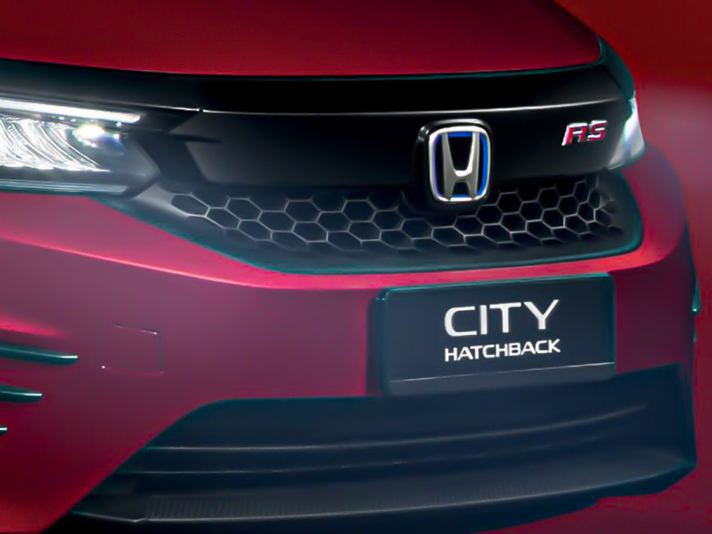
Is Honda City Hatchback Still Worth Buying in 2025?
JohnJun 26, 2025
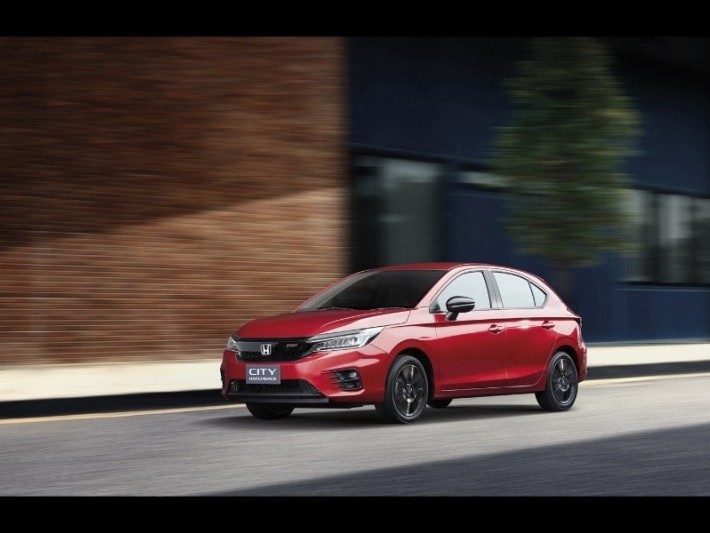
High Cost-Performance: Is the Honda City Hatchback Worth Buying? Dynamic Experience Revealed!
AshleySep 23, 2024
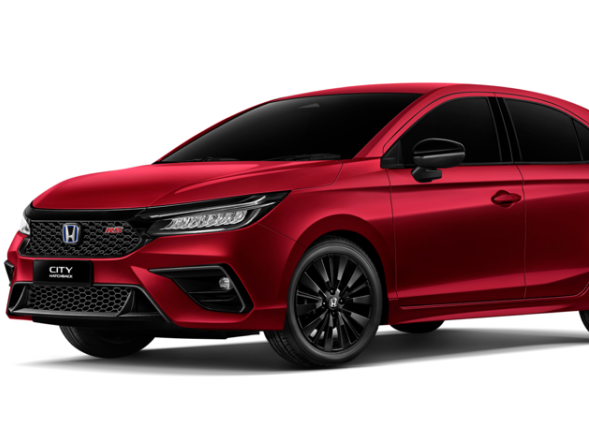
From Jazz to City Hatchback: The Perfect Transformation of Honda Hatchback
LienJun 4, 2024
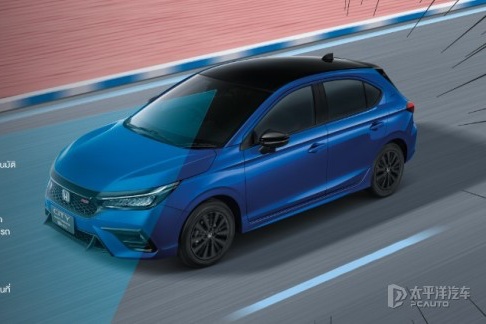
Honda City e HEV Hatchback RS: Fuel Efficiency
AshleyMay 4, 2024

Honda and Red Bull's eight-year partnership comes to an end. Honda will start a collaboration with Aston Martin.
JamesDec 10, 2025
View More








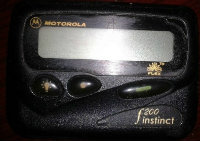



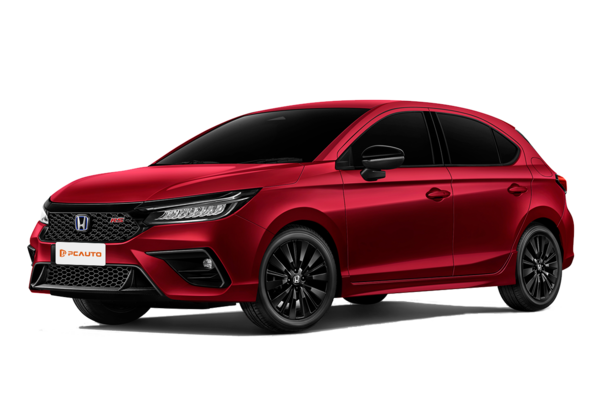
 Cars
Cars




Pros
Cons